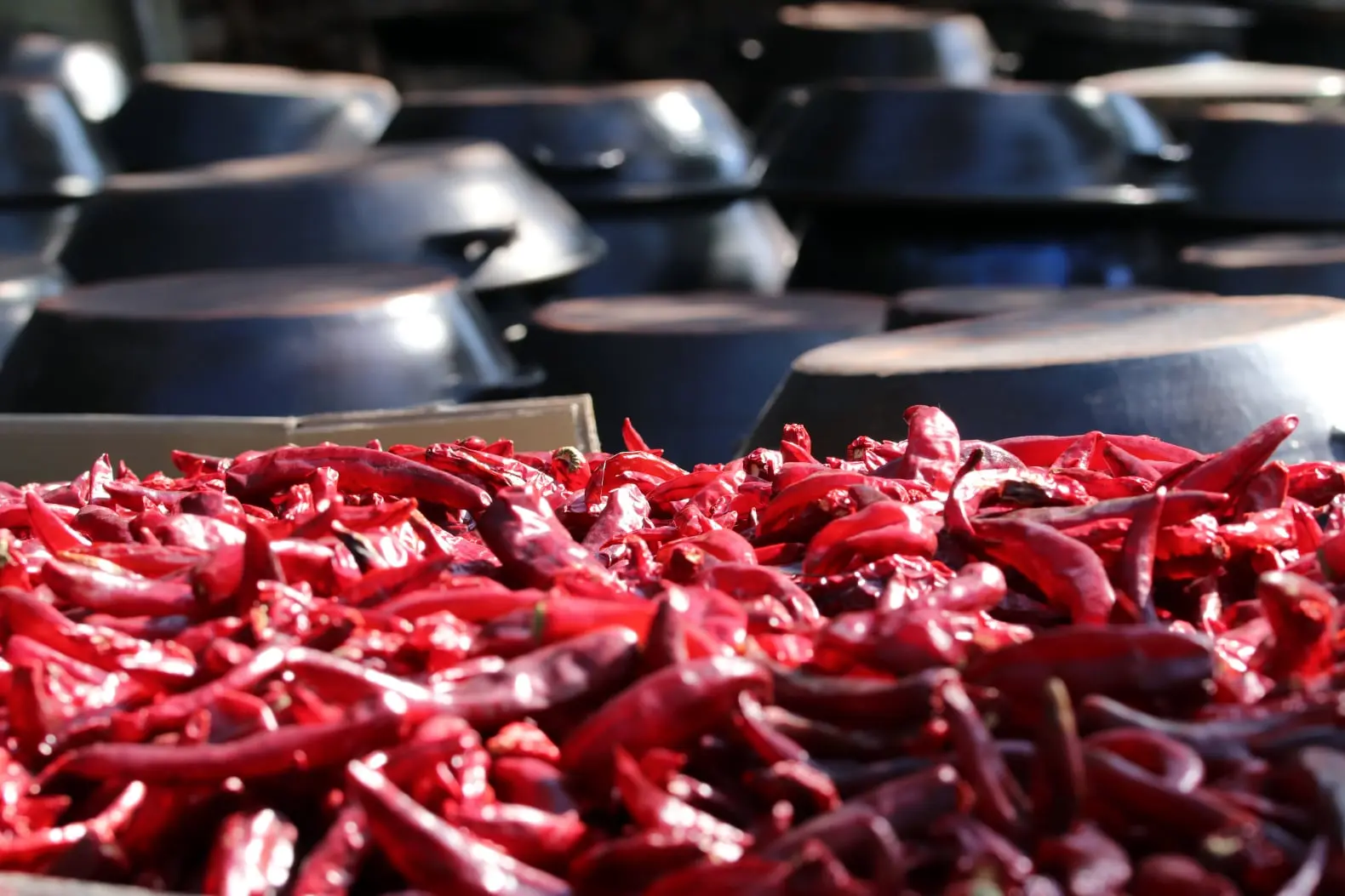How the Chili Pepper Changed Korea's Food Landscape

Article by Gil "hannaone"
© Copyright 2024. All rights reserved.
Image from pixabay.com
Introduction
Picture this: a vibrant red chili pepper, adding a fiery kick to your favorite Korean dish. The humble yet mighty ingredient that has revolutionized the culinary scene in Korea - the chili pepper. Join us on a journey through time as we uncover how this small but powerful spice has transformed the very essence of Korean cuisine.
Some History - Chili Peppers in Korea
Korea's relationship with chili peppers dates back centuries, shaping the nation's culinary identity in profound ways. The introduction of chili peppers to Korea is believed to have occurred during the Joseon Dynasty in the late 16th century. Initially brought by Portuguese traders, these fiery peppers quickly captivated Korean palates and became a staple ingredient in local dishes.
The adoption of chili peppers revolutionized Korean cuisine, adding depth and complexity to traditional recipes. Soon, kimchi - Korea's iconic fermented vegetable dish - began incorporating chili peppers as an essential component, transforming it into the spicy delicacy known today. Over time, Koreans developed a unique affinity for bold flavors and heat levels that set their cuisine apart on the global stage.
Today, chili peppers are ubiquitous in Korean cooking, used creatively in everything from stews and stir-fries to condiments and side dishes. The vibrant red hue and intense spiciness of Korean chili peppers continue to inspire innovative culinary creations that celebrate Korea's rich gastronomic heritage.
Usage
When it comes to Korean cuisine, chili peppers are a staple ingredient that adds depth and complexity to dishes. From kimchi to bulgogi, these fiery peppers are used in various forms - fresh, dried, or powdered. Their vibrant red color not only enhances the visual appeal of the dishes but also signifies their spicy kick.
Dried chili peppers ground into powder form the base of gochujang, a spicy and savory fermented paste that is a key component in many Korean dishes.
Gochugaru, or Korean chili flakes, are another popular form of chili peppers used in Korean cuisine. These flakes provide a milder heat level compared to other peppers like Thai bird chilies or habanero peppers.
Chili peppers are often blended with other ingredients like garlic, ginger, and soy sauce to create savory marinades and sauces. They can be found in popular dishes like tteokbokki (spicy rice cakes), bibimbap (mixed rice bowl), and jjigae (stew).
The versatility of chili peppers allows them to be incorporated into both traditional recipes and modern fusion creations that continue to push the boundaries of Korean cuisine.
Milder green chili pepper are often eaten as snack or side dish for Korean grill.
Whether you prefer mild heat or tongue-tingling spice, there is a chili pepper variety for every palate in Korean cuisine. So next time you indulge in Korean food, savor the unique flavor profile that chili peppers bring to each dish.
Varieties in Korea
Korea boasts a diverse range of chili pepper varieties that add depth and complexity to its cuisine.
One popular type is Put-gochu (풋고추) / Hong-gochu (홍고추). Put-gochu is the young green chili which matures into hong-gochu or red chili. The young chili pepper is often pickled, added to assorted types of kimchi, or appears as a side for Korean Grill. The mature red chili most often sun dried, then ground into the flakes or powder known as gochugaru.
Another staple is Ggwari-gochu (꽈리 고추), a Korean grown varity very similar to Shishito peppers. This pepper is mild with a slight hint of heat and is often used in stir-fries and side dishes. It is also eaten as an accompaniment to Korean grilled meat dishes.
For those who love a fiery kick, the Cheongyang-gochu (청양고추) is a popular choice. This thin and long chili pepper packs a punch and is often used in spicy stews and sauces. They are often sliced thinly or added whole to stir-fries or banchan (side dishes). The fiery sensation they bring can awaken even the most seasoned spice lover's taste buds.
Several new hybrid chili peppers are begining to crop up like Oi Gochu/오이고추 (cucumber pepper) also known as Asagi Gochu/아사기고추, or “crunchy pepper”. It is a very sweet green chili, with a crunch similar to bell pepper. This pepper is mostly eaten raw with a gochujang based dipping sauce.
Another hybrid is gaji gochu (가지고추), apparently a cross of egg plant and chili pepper. Deep purple in color with a taste and crunch close to that of the Oi-gochu. It too is eaten raw with the same gochujang dipping sauce or as a side dish.
In Korean cuisine, each chili pepper variety plays a unique role in enhancing flavors and creating unforgettable dining experiences.
Conclusion
The introduction of chili peppers to Korea centuries ago marked a significant turning point in the country's culinary landscape. This fiery ingredient not only added heat but also depth of flavor, revolutionizing traditional Korean dishes and creating new ones altogether.
Almost from the introduction of chili peppers to Korea, they have been embraced for their unique taste and spiciness. From kimchi to galbi, gochujang to tteokbokki, the chili pepper has become an integral part of Korean cuisine, adding complexity and character to each dish.
Korea boasts a variety of chili peppers that cater to different tastes and spice preferences. Whether it's the mild shishito pepper or the blazing hot cheongyang red pepper, there is a pepper for every palate in Korean cuisine.
The introduction of chili peppers into Korea has transformed its food culture in remarkable ways. This humble ingredient has not only spiced up Korean dishes but also played a crucial role in defining the bold flavors that make Korean cuisine so beloved worldwide.
The chili pepper truly stands as a symbol of innovation and tradition within Korea's rich culinary heritage.


